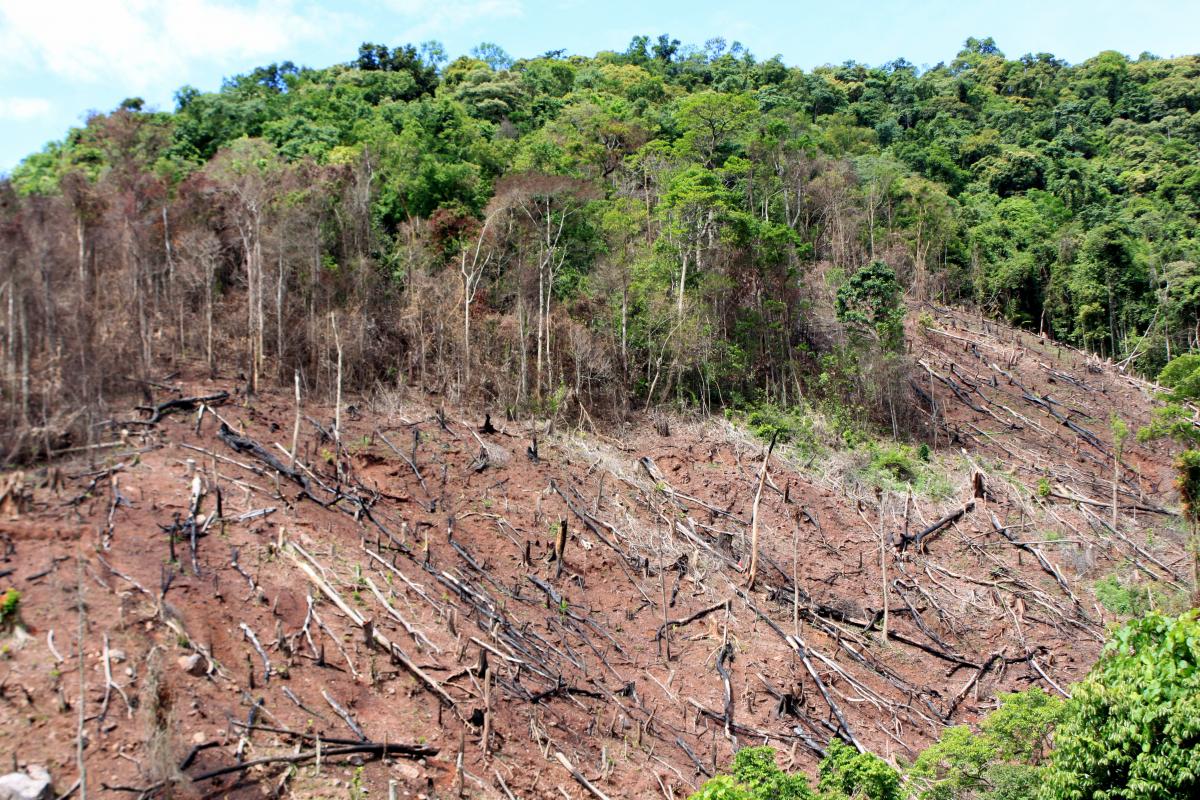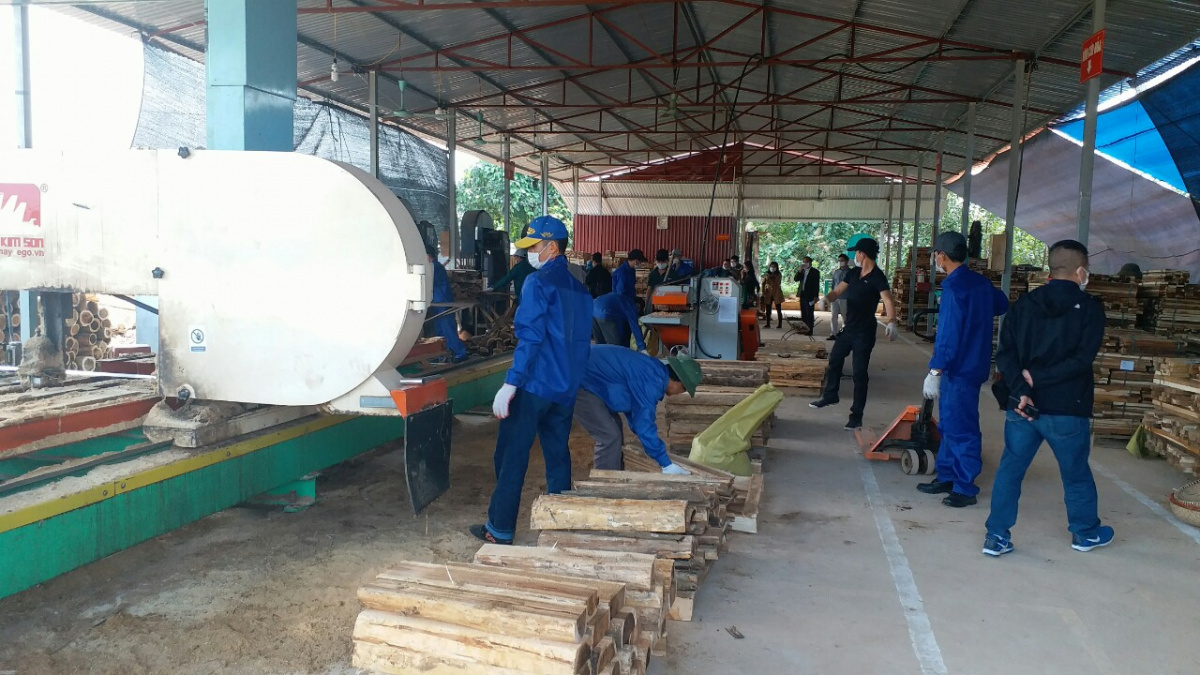Forest conservation in Quang Tri: what can be done?
In Quang Tri province, Viet Nam, not far from the Lao border, one side of the valley is a nature reserve, and on the other a 130-hectare community-managed forest. The community forest looks in reasonably good condition, with no clearing and not much bamboo re-growth. When asked, the village leader said they got their timber from the nature reserve: "No one's there," he said.

Photo: Forests are cleared for planting cassava in Quang Tri Province © Jake Brunner, IUCN Viet Nam
And so it proved. Inside the nature reserve, our group from IUCN and the Clinton Climate Initiative were shown a large area of forest that had been cut and burned. Judging from the size, it would have taken several days (or rather nights) to clear the trees, and contrary to what the forest ranger told us it was clearly done with chainsaws.
The cleared forest will most certainly be planted with cassava, which yields around US$1,000/hectare at the farm gate. Cassava is used to produce animal feed, biofuel, and flour to make instant noodles: 80% of processed cassava is exported and China is the largest market.
Cassava production has boomed over the last 5-10 years in Viet Nam. While the government planned for 450,000 hectares of cassava by 2020, the actual area of cassava exceeded 550,000 hectares by 2012 with the largest area north-central Viet Nam including Quang Tri (with nearly 175,000 hectares in 2012). Cassava is not as profitable as coffee or rubber but is cheaper to plant and easier to care for; it's known as the “tree of the poor”.
When we met the nature reserve director, he told us that he knew exactly who cut the forest and that they'd been fined. But since the families are too poor, they did not pay the fine. So not only is there a strong incentive to continue the clearing, there is no disincentive in place to end the practice.
The result is high rates of forest loss, outside and inside the nature reserve. When we asked the director what he needed most, he said more staff. But even if his staff were tripled, it is unlikely they could stop the clearing.
The clearing we saw was a 20-minute walk from the main road and the chainsaw would have been heard easily. But rangers can't arrest the cutters because that could trigger an angry reaction.
So what can be done for the forest? The only thing more valuable than cassava is the timber. We suggested to the director that selective (and hopefully sustainable) logging be legalised in exchange for strictly enforced limits on forest clearing. In theory, the revenue from timber sales would induce compliance.
This isn't a completely new suggestion. Research on logging concessions in Malaysia shows that the best way to enforce compliance with environmental regulations is to give permission to continue logging conditional on compliance with these regulations because of the high profits to be earned from logging a new area.
But the director said that such an agreement was illegal in Viet Nam. Nevertheless, there is a tradition in Viet Nam of using "pilots" to test new ideas that may eventually become legalised and mainstreamed. And some sort of negotiated "legalise and regulate" solution is needed if Viet Nam isn't to lose all of its rapidly declining area of natural forest. For deep-seated social and economic reasons, the current approach of strict adherence to the law but no ability to enforce it isn't working.
This blog post was contributed by Jake Brunner, Head, Indo-Burma Group for IUCN. Jake recently participated in a scoping mission by IUCN and the Clinton Climate Initiative for a global forest landscape restoration project funded by BMUB, the German Ministry of Environment, Nature Conservation, Building and Nuclear Safety.



